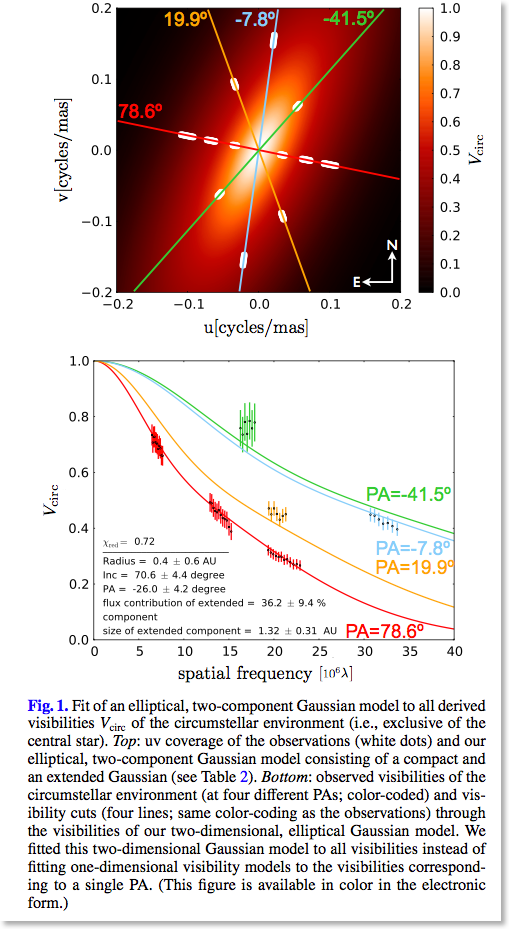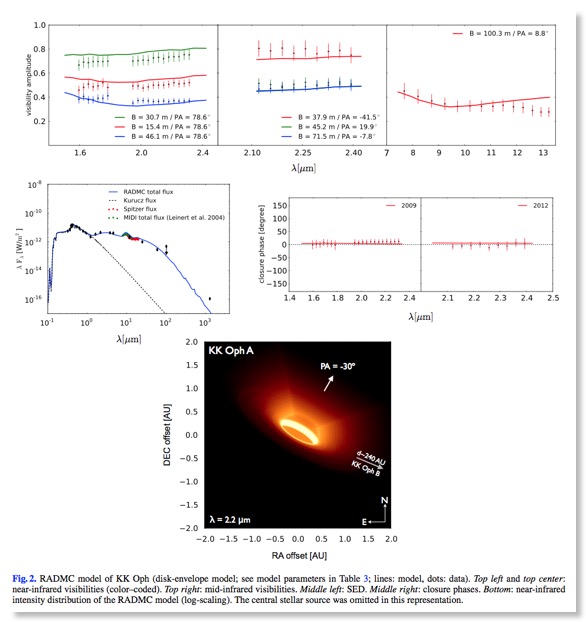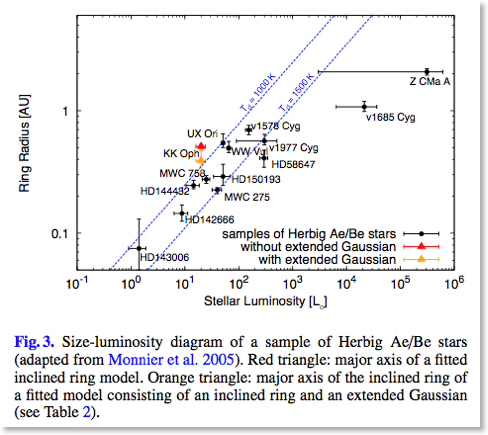by A. Kreplin, G. Weigelt, S. Kraus, V. Grinin, K.-H. Hofmann, M. Kishimoto, D. Schertl, L. Tambovtseva, J.-M. Clausse, F. Massi, K. Perraut and Ph. Stee, 2013 A&A, 551, A21
Aims. We study the inner sub-AU region of the circumstellar environment of the UX Ori-type star KK Oph with near-infrared VLTI/AMBER interferometry. We are particularly interested in the inclination of the star-disk system, and we use this information to test the current standard picture for UX Ori stars.
Methods. We recorded spectrally dispersed (R ~ 35) interferograms in the near-infrared H and K bands with the VLTI/AMBER instrument. The derived visibilities, closure phases, and the spectral energy distribution of KK Oph were compared with two-dimensional geometric and radiative transfer models (RADMC).
Results. We obtained visibilities at four different position angles. Using two-dimensional geometric models, we derive an axis ratio ~3.0 corresponding to an inclination of ~70°. A fitted inclined ring model leads to a ring radius of 2.8 ± 0.2 mas, corresponding to 0.44 ± 0.03 AU at a distance of 160 pc, which is larger than the dust sublimation radius of ~0.1 AU predicted for a dust sublimation temperature of 1500 K. Our derived two-dimensional RADMC model consists of a circumstellar disk with an inclination angle of ~70° and an additional dust envelope.
Conclusions. The finding of an ~70° inclined disk around KK Oph is consistent with the prediction that UX Ori objects are seen under large inclination angles, and orbiting clouds in the line of sight cause the observed variability. Furthermore, our results suggest that the orbit of the companion KK Oph B and the disk plane are coplanar.



